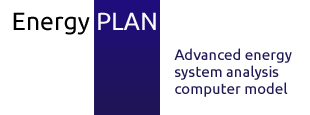HYDROGEMS is a set of hydrogen energy models suitable for simulation of integrated hydrogen energy systems; particularly renewable energy based stand-alone power systems [1]. The models have been developed at Institute for Energy Technology since 1995, first as part of a PhD-study [2] and later in various projects [3-7]. HYDROGEMS were made publically available for TRNSYS15 users [8] in 2002, and later fully integrated into TRNSYS16 in 2006 (which is discussed in section 4.1.34). To use HYDROGEMS requires about one month of training for TRNSYS users, or three months of training for others.
The HYDROGEMS-models can be used to analyse the performance of hydrogen energy systems down to one-minute time-steps. The models are particularly designed to simulate hydrogen mass flows and electrical consumption and production, but can also be used to simulate the thermal performance integrated hydrogen systems. The HYDROGEMS-library consists of the following component models: Wind energy conversion systems, photovoltaic systems, water electrolysis, fuel cells, hydrogen gas storage, metal hydride hydrogen storage, hydrogen compressor, secondary batteries (lead-acid), power conditioning equipment, and diesel engine generators (multi-fuels, including hydrogen). The source code for all of these models, except the metal hydride model and alkaline fuel cell model, are available for registered TRNSYS16 users. The HYDROGEMS component models are based on thermodynamics, electrochemistry, and applied physics (e.g., electrical, mechanical and heat and mass transfer engineering). In order to make the models suitable for energy system simulations some simplifications have been made. This is done by using empirical relationships for current-voltage characteristics (IU-curves) for solar cells or electrochemical cells (e.g., fuel cells, batteries, and electrolysers), power curves for wind turbines, efficiency curves for electronic equipment (e.g. AC/DC-inverters), etc. Typical system model parameters are: (i) Component sizes (e.g. cell areas), (ii) System sizes (e.g., number of cells in series or parallel per module), and (iii) Limits (e.g., min/max of voltages, currents, temperatures etc.). Typical forcing functions required for renewable energy system simulations are wind speed (m/s), solar radiation (W/m2), current (A) or power (W) demand, while typical variables calculated by the models are temperature (°C), pressure (bar), current (A), voltage (V), and flow rate (Nm3/h). The empirical parts of the models are designed so that it is possible to find default parameters and/or calibrate coefficients based on data found in literature (e.g. product data sheets, papers and articles). It is a challenge to calibrate model parameters and coefficients. Hence, access to actual data from the hydrogen demonstration systems being modelled is essential to ensure the validity of the models. Fuel, investment, fixed O&M and variable O&M costs are also considered by HYDROGEMS.
HYDROGEMS was first used to analyse the operation of stand-alone PV-hydrogen system [2, 4, 9, 10] and was later used to investigate stand-alone wind energy systems [3, 6, 11]. The models have also been used to simulate renewable based electrolytic hydrogen fuelling stations [5, 7].
References
- HYDROGEMS, Institute for Energy Technology, 25th April 2009, http://www.hydrogems.no/
- Ulleberg, Ø. Stand-Alone Power Systems for the Future: Optimal Design, Operation & Control of Solar-Hydrogen Energy Systems, 1998. Ph.D. Thesis, Department of Thermal Energy and Hydropower, Norwegian University of Science and Technology, Trondheim, Norway. See also:http://www.hydrogems.no/references/Ulleberg_Abstract_PhD_1998.html.
- Glöckner, R., Kloed, C., Nyhammer, F. & Ulleberg, Ø., Wind/hydrogen systems for remote areas – A Norwegian case study, Proc. of the WHEC 2002 – 14th World Hydrogen Energy Conference, Montreal, Canada, 9-13 June.
- Zoulias, E. I., Glockner, R., Lymberopoulos, N., Tsoutsos, T., Vosseler, I., Gavalda, O., Mydske, H. J. & Taylor, P., Integration of hydrogen energy technologies in stand-alone power systems analysis of the current potential for applications. Renewable and Sustainable Energy Reviews, 10(5), pp. 432-462, 2006.
- Ulleberg, Ø., Ito, H., Maack, M. H., Ridell, B., Miles, S., Kelly, N., Iacobazzi, A., Argumosa, M. d. P. & Schoenung, S. Hydrogen Implementing Agreement (HIA); Task 18 – Integrated Systems Evaluation; Subtask B – Demonstration Project Evaluations; Final Report. International Energy Agency, 2007,http://www.ieahia.org/pdfs/finalreports/18subtaskB/Task18_SubtaskB_Final_ISBN.pdf.
- Ulleberg, Ø. & Mørkved. A. Renewable Energy and Hydrogen System Concepts for Remote Communities in the West Nordic Region – The Nolsoy Case Study. Institute for Energy Technology, 2008,http://www.ife.no/publications/2008/ensys/publication.2008-06-09.7419867360/view.
- Briguglio, N., Ferraro, M., Andaloro, L. & Antonucci, V., New simulation tool helping a feasibility study for renewable hydrogen bus fleet in Messina. International Journal of Hydrogen Energy, 33(12), pp. 3077-3084, 2008.
- Ulleberg, Ø. & Glöckner, R., HYDROGEMS – Hydrogen Energy Models, Proc. of the WHEC 2002 – 14th World Hydrogen Energy Conference, Montreal, Canada, 9-13 June.
- Ulleberg, Ø., Modeling of advanced alkaline electrolyzers: a system simulation approach. International Journal of Hydrogen Energy, 28(1), pp. 21-33, 2003.
- Ulleberg, Ø., The importance of control strategies in PV-hydrogen systems. Solar Energy, 76(1-3), pp. 323-329, 2004.
- Ete, A. Optimization of the HARI stand-alone energy system with TRNSYS, 2006. Masters Thesis, Energy Systems Research Unit, University of Strathclyde, Glasgow, Scotland. See also: http://www.esru.strath.ac.uk/Documents/MSc_2006/ete.pdf.



